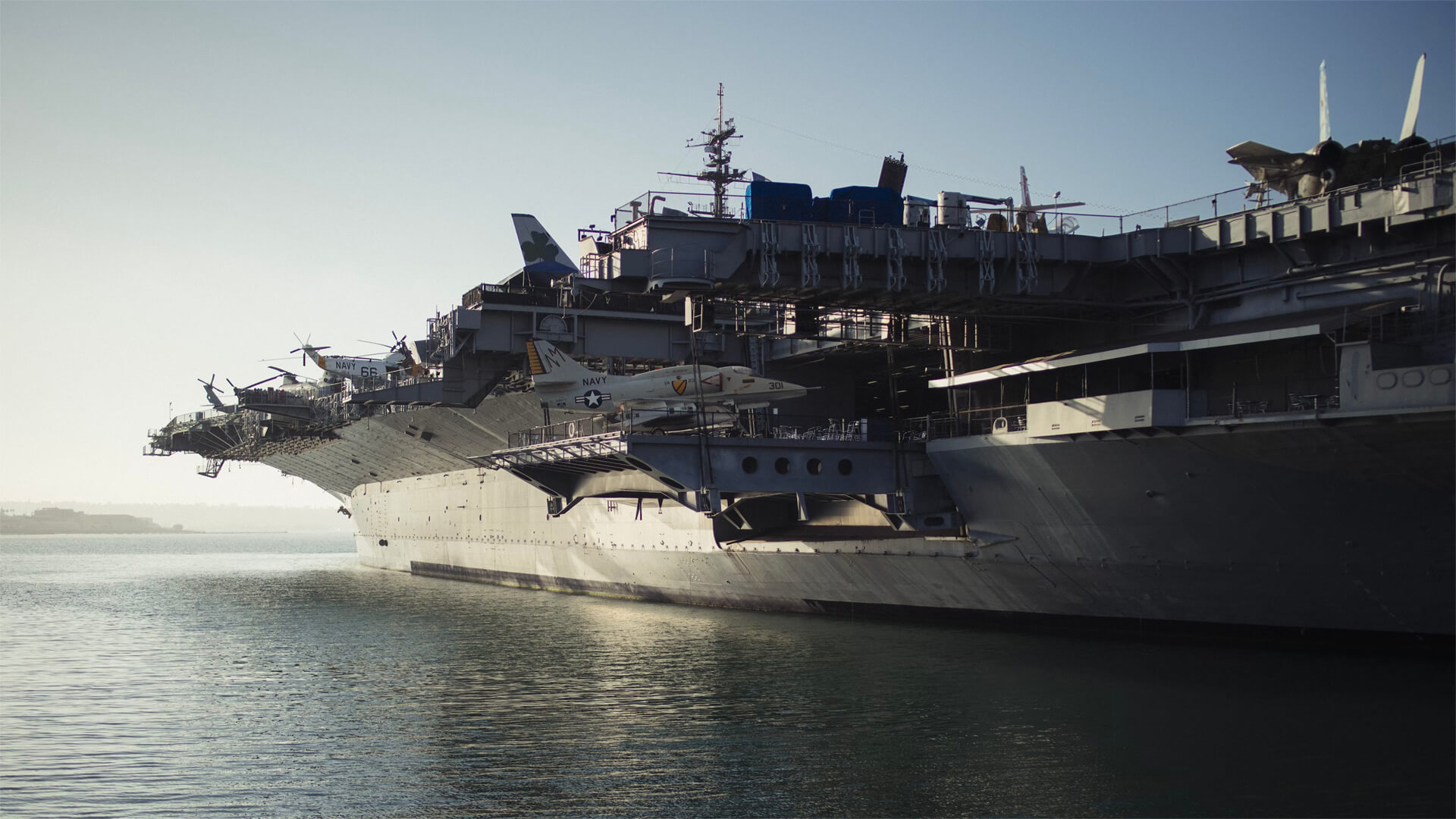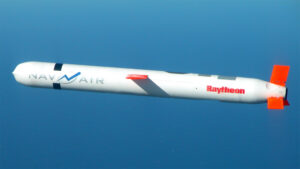There’s been much discussion lately surrounding the changing power balances in the Pacific – specifically the dynamics between the US and China. Sure, China has numbers, but would you rather have 25 kayaks equipped with BB guns or five speedboats mounted with mini-guns?
That’s pretty much the whole story between these two powers – quality over quantity. That’s before we look at the fun new toys that the US is introducing, which will only bolster their strategic advantage in places like Midway and Guam.
With the Biden administration taking a firmer stance on security measures, I expect the United States’ strategic advantage over China to grow. However, that doesn’t mean we should completely disregard the Chinese navy just yet.
Here at Zeihan On Geopolitics we select a single charity to sponsor. We have two criteria:
First, we look across the world and use our skill sets to identify where the needs are most acute. Second, we look for an institution with preexisting networks for both materials gathering and aid distribution. That way we know every cent of our donation is not simply going directly to where help is needed most, but our donations serve as a force multiplier for a system already in existence. Then we give what we can.
Today, our chosen charity is a group called Medshare, which provides emergency medical services to communities in need, with a very heavy emphasis on locations facing acute crises. Medshare operates right in the thick of it. Until future notice, every cent we earn from every book we sell in every format through every retailer is going to Medshare’s Ukraine fund.
And then there’s you.
Our newsletters and videologues are not only free, they will always be free. We also will never share your contact information with anyone. All we ask is that if you find one of our releases in any way useful, that you make a donation to Medshare. Over one third of Ukraine’s pre-war population has either been forced from their homes, kidnapped and shipped to Russia, or is trying to survive in occupied lands. This is our way to help who we can. Please, join us.
TranscripT
Hey everybody. Peter Zeihan here coming to you from Colorado where we’re about to get a big dump of snow. So I figured I’d get out and hike while I could. Today we’re going to talk about some of the changing power balances in the Pacific Ocean, specifically as it relates to the United States versus the Chinese. Now, everyone seems to be all paranoid, almost a little defeatist about the concept that the Chinese have more ships in the water than the United States has.
Based on how you count those ships have got between 370 and 620. And on the American side, again, based on how you count the ships, somewhere between 250 and 300. So, you know, obviously there’s more there. But the bigger concern from my point of view, isn’t so much the number of ships, it’s the range of the weapon systems.
So most Chinese vessels are very small. In fact, just a couple thousand tons. Things that the United States, as a rule, doesn’t even bother fielding because they’re too vulnerable in their ranges to limited. So only about 10% of China’s ships can actually go more than a thousand miles. And very few of them have a strike capability that’s more than a couple thousand miles.
Obviously, America’s super carriers are fully blue water capable and with their aircraft can strike things considerable distance away, especially if they’re using standoff missiles. So I’ve never considered this a fair conversation or a fair fight in the first place. But let’s say that I was concerned that say that with the Chinese expansion of intermediate range missiles, kind of in the 500 kilometer or 5000 range, that they could really hold back US naval forces.
Well, if that is your concern, never really was mine. But look, if that is your concern, you can have whoa, slick. All of a sudden you can rest easy because there have been a couple of new developments in the Pacific that are going to be fully manifested by the end of next calendar year. The United States is going to be deploying two new types of weapon systems.
The first is a land based intermediate range missile, something that until recently was illegal in the United States during the late Cold War. The first big arms control treaty was called the Intermediate Range Forces or INF Treaty, and it barred any sort of land based missile with a range between 500 kilometers and 5500 kilometers. The idea is that if you remove those from the equation, then Europe is relatively immune from a blitzkrieg nuclear strike from the Soviet Union and vice versa.
The land based systems in Europe wouldn’t be able to hit the western parts of the former Soviet Union, where the bulk of the Soviet population lived. Well, two things led to that treaty’s demise in 2019. First, the Russians just started ignoring it and deploying their own weapons systems. And second, the Chinese, who were never a signatory, started implementing these things in mass.
So rather than work with the United States to expand the arms control regimen to give themselves greater security, they just decided that everybody else sucked and they do it anyway. And apparently they believed that everyone else was just too dumb to follow suit. Well, so if you think about how fast this has happened, the treaty was abrogated in 2019.
First discussions on these new weapons systems would have happened within the next year. It’s only 2023 and they’re to be implemented by 2024. So he notes, that’s pretty quick for weapons development system. The Pentagon’s been pretty tight lipped about the range of the new systems, but they’re making it very clear that at the moment they’re not going to Japan or the Philippines.
They’re only going to U.S. territories like Midway and Guam. And of course, the Australians are there and they’re going to pick me, pick me. So they’ll probably be some in Darwin as well. And that basically allows the United States, with the flick of a few buttons to launch cruise missiles with ranges in the thousands of kilometers to basically intersect any shipping route and any naval patrol that the Chinese are currently putting out, although these are mostly land based.
So it’s going to be more about wind tech for the most part. Which brings us to the second piece. There’s another new weapon system that is going out primarily to the subs, and that is a version of the Tomahawk cruise missile, which will now be able to target maritime targets. So for those of you who remember back to the Gulf War in 1992, we’re going to break here for a minute.
Sorry about that fire mitigation crew. Kind of noisy anyway. Sea launched Tomahawks, which will be able to target maritime targets. Now, for those of you who remember back to 1992 in the Gulf War, you’ll recall that they were the first of our smart weapons basically systems. They could follow a GPS map and target things from over a thousand miles away with a warhead that has about a half a ton.
Now, you throw something like that against a vessel. There aren’t a lot of vessels that can take more than one hit from something like that. The problem, of course, has been targeting remotely. Now you can use reason GPS information to target your missiles. The Chinese do some version of that with their ballistic missiles, which are designed to take out U.S. naval targets.
The problem with that strategy and one of the reasons why I’ve never been overly impressed with Chinese weaponry is unless you have active eyes on your missiles blind, it can’t adjust on its own. So you can program in a path kind of like what the Shaheed drones are being used for in the Ukraine, where the Russians, they basically program in a specific point in space.
So when they hit a school or apartment complex, they’re specifically aiming for it. They’re kind of dumb weapons, even if they do have some degree of guidance. But ships move and that doesn’t work. So the Chinese rely on satellite recon in order to provide placement. But the Chinese don’t have a satellite warfare system like the United States has had for 30 years.
So if you remember back to our Chinese, it’s been a while, 15 years ago, maybe there’s an eight. I think there was all this hubbub blue when the Chinese destroyed their first satellite and created that debris field that took out a lot of stuff. Well, very quietly over the course of the next day, the United States, just to underline to the Chinese, how far behind they were, took out a half a dozen of our old satellites using a half a dozen different weapons programs to show to the Chinese that, like, look, you may think you’ve got a gun that can target our Navy, but if we ever get into a hot war, the first thing
that’s going down is your entire satellite network. So stop it. Of course, China only became more narcissistic nationalists after that, but they haven’t fixed the underlying problem the U.S., however, has. We all talk about artificial intelligence and how the Chinese have 1.5 billion people and all the coders they want and all the data they want. That’s true. But they very tightly control the type of A.I. that can be developed because they don’t want independent decision making, and they certainly don’t want anything that’s going to give people an independent means of existence independent of the state.
So a lot of the things we’re seeing here are things like church liberty. They’re just not allowed there because they could be used for political purposes. And that means the United States has a much more well-rounded approach to A.I., including in its weapons systems, whereas the Chinese are precisely focused on social monitoring to keep their population under control.
Well, that technology is undoubtedly in play with this new version of the Tomahawk that can target surface ships because ships move. So you now have the quite a subs in the world with the greatest range in the world and in addition to their normal weapons outlay. By the end of next year they’ll also be packing tomahawk hawks that can target naval vessels.
So in the case of a hot war, you put two or three American missile submarines out there and you know, the Chinese don’t have a long reach navy because you use those systems to hit the ships that do have range and nothing else can leave far beyond sight of the coast. So, you know, done and done. Now, there is unfortunately a political component to this, because if you’re looking at these technologies, I mean, medium range cruise missiles are things we stopped working on back in the late eighties because of the INF Treaty.
And the Tomahawk is a weapon that was first debuted in 1992. So none of these are new. So the question is, with the Chinese becoming more jerk like and the Russians becoming more jerk like day by day, why haven’t these things happened faster? Well, some of this is explainable, so go all the way back to the Clinton administration.
It was the early post-Cold War days. We were all trying to be friends. Why would you develop a weapons system to specifically target your hopefully, friends? That makes sense. Second, the W Bush administration was when relations with the Russians and the Chinese started to turn. But the W Bush administration was more than a little occupied with things in the Islamic world, and especially when it came to the operations in Afghanistan, The more reliable partner for us in getting equipment to our troops in Afghanistan was Russia, much more so than Pakistan.
So I can understand why it was backburner then. But by the time you got to the Obama administration, the Russians had started invading people again. The Chinese were just shamelessly stealing everything that they could and starting to hack into government databases. But President Obama couldn’t be bothered to have a meeting with anyone. So nothing happened for eight years.
He also kind of unofficially thought of the U.S. military as an enemy and didn’t want to imbue it with any more power than he had to. Well, let me get to the Trump administration. Will, you know, updates to the strategic doctrine, a new weapon, systems that doesn’t work by tweet. And so we basically got some strategic incompetence, two administrations in a row lasting 12 years during the period while the Russians and the Chinese were starting to feel out how they could expand their influence.
So it wasn’t until Joe Biden that we actually got firm decision making on the development and deployment of these things. So there’s a lot of reasons I don’t like Joe Biden, but one of the advantages of having a president that’s been around for 170 kajillion years is back in the eighties when he was a full grown great grandpa, he remembered these systems.
He remembered the dawn of the tomahawk, He remembered the weapons we were working on when the IAF treaty was adopted. For him, the context that was necessary to develop in order to make the political decisions to order these developments was already there. And so as long as he’s not a drooling mess, we’re getting a lot more robust security decision making, especially forward looking decision making than we have had since at least George Herbert Walker Bush in 1991.
Is it enough? We’ll see. But if you were the the Chinese or the Russians and you were counting on the general incompetence of Obama and Trump to be the new norm for American politics, I can happily report to you that you were flat out fucking wrong and now you have to deal with.







